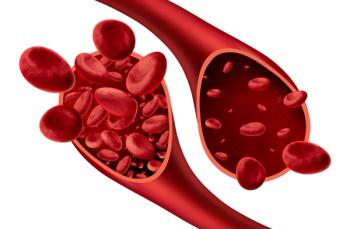
Pharmacists as providers: The expanding, changing role
Although many states and the federal government are taking a close look at granting provider status for pharmacists, the two entities have slightly different priorities.
Although many states and the federal government are taking a close look at granting provider status for pharmacists, the two entities have slightly different priorities.
ThompsonKasey Thompson, vice president,
Bipartisan companion bills introduced last January-the
"It is about coverage of services and access to them by Medicare beneficiaries, not about a designation as provider," says Stacie Maass, senior vice president, pharmacy practice and government affairs, American Pharmacists Association.
Related:
Maass says there have been discussions on the topic for more than a decade, with more activity in recent years as states seek new ways to deliver more efficient, coordinated and team care; promote better access; and free up physician time as more individuals seek coverage under the Affordable Care Act.
Maass is optimistic that if the federal law makes it possible for pharmacists to gain reimbursement under part B, commercial insurers will follow suit in compensating pharmacists for their services. "Pharmacists have more medication expertise than anyone," she says.
Varying levels
Thompson says most states already consider pharmacists to be "providers," which he says is the first level of ascribing more recognition. The next level is an expanded role including such services as prescribing, furnishing immunizations and working with other healthcare team members to assess patient conditions. The highest tier is providing reimbursement for services.
"The federal legislation is important with today's insufficient number of providers and more complex medications that need special expertise," Thompson says.
Related:
By 2025, there will be a nationwide shortage of between 45,000 and 90,000 primary and specialty care physicians, according to the
If pharmacists get their way, they will join a number of non-physician practitioners who are already compensated under Part B.
States take action
States, on the other hand, are more concerned with provider designation; expanding the scope of practice of pharmacists through legislation; enabling them to offer services beyond dispensing medication; and granting pharmacist compensation by commercial and private insurers.
Related:
According to the
California passed bipartisan-sponsored legislation in 2013, effective January 1, 2014, that expanded the ability of pharmacists to collaborate with other members of a healthcare team.
Jon Roth, chief executive officer of the
Without provider designation under the California law, pharmacists would have difficulty accessing medical benefits and offering medical-related services, Roth says.
Based on specified requirements, California pharmacists now can directly dispense contraceptives to consumers and furnish immunizations and travel medications. In addition, with advanced practice licensing-a new category created by the law-they can:
- Initiate, adjust and discontinue medications;
- Perform patient assessments; order and interpret medication-related tests;
- Refer patients to other healthcare providers; and
- Participate in the evaluation and management of health conditions in collaboration with other providers.
Compensation, however, has 31 flavors, says Roth, lacking any standardization for what services pharmacists should receive payment.
Physician concerns
Pharmacists in California and other states are signing collaborative practice agreements with physician groups and health systems and in some cases, independent community pharmacies are developing agreements with health plans, Roth says.
Dr NowakLynne Nowak, MD, senior director, clinical programs for pharmacy benefits manager at
Enabling pharmacists to practice at the top of their licenses and join other healthcare professionals in providing better care is a necessity because of an aging, sicker population, increased use of medical services, and more coverage of individuals says Nowak. "We need more providers, and many pharmacists have advanced education, licensing and training to do more than just dispense drugs," she says.
Although some physicians might be concerned about the new roles of pharmacists, Roth says pharmacists could help ensure medication safety and contribute expertise and additional services. "We are not trying to make pharmacists into surgeons or allow them to conduct physician-related services but instead, use pharmacists more effectively," he notes, adding that, when physicians work with clinical pharmacists, they begin to appreciate their expertise and ability to increase adherence and deliver care.
Reimbursement changes
On May 11, 2015, Washington State signed into law a provision that requires commercial and private healthcare plans to enroll pharmacists into their provider networks and mandates that plans be responsible for compensating pharmacists for services rendered within their scope of practice.
Rochon"This new law should increase patient access to services by pharmacists that were not previously covered, especially in hospitals and clinics," says Jeff Rochon, chief executive officer,
A workgroup is expected to deliver a report on standards for credentialing, privileging, billing and payment for pharmacists to the
Washington was an early adopter in promoting pharmacists' role in healthcare by allowing them to prescribe, join other providers in collaborative care and manage medication therapy since 1979. The new law will add reimbursement to those and other services. "States may designate pharmacists as providers or define scope of practice enabling them to offer certain services but that doesn't necessarily mean they will receive payment for them," Rochon says.
The state also has an Every Category of Heath Care Providers Law on its books that states: "Health carriers [health insurance plans/payers] shall not exclude any category of providers licensed by the state of Washington who provide healthcare services or care within the scope of their practice..." WSPA believes pharmacists fall into one of those categories.
Rochon says that as the healthcare system evolves from fee for service to an emphasis on outcomes, pharmacists are seen as crucial to healthcare teams and should be compensated for their services.
Oregon joined California and Washington in passing a similar law on June 10, 2015. The new legislation not only establishes provider status, but also allows health insurers to pay for services provided by pharmacists through clinical pharmacy practice. In addition, it gives the Oregon Health Authority permission to work with the state board of pharmacy to establish protocols for services, such as prescribing, smoking cessation and travel medications.
Mari Edlin is a frequent contributor to Managed Healthcare Executive. She is based in Sonoma, California.
Newsletter
Get the latest industry news, event updates, and more from Managed healthcare Executive.






















































